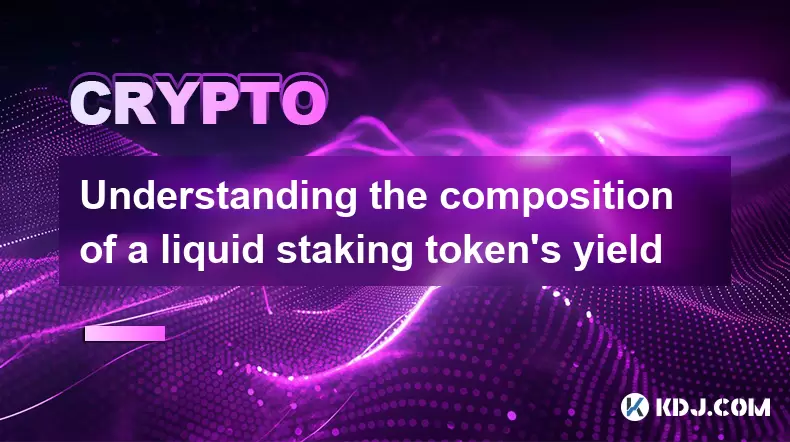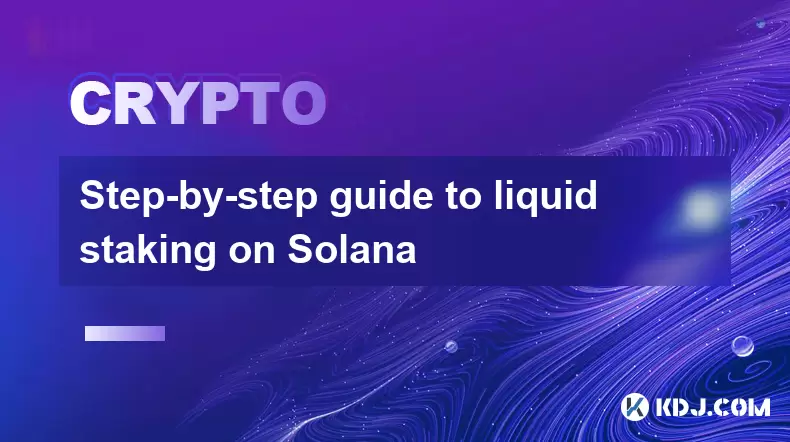-
 Bitcoin
Bitcoin $118900
1.66% -
 Ethereum
Ethereum $3735
1.35% -
 XRP
XRP $3.506
0.71% -
 Tether USDt
Tether USDt $1.000
-0.01% -
 BNB
BNB $799.4
5.78% -
 Solana
Solana $202.0
1.87% -
 USDC
USDC $0.9999
0.00% -
 Dogecoin
Dogecoin $0.2661
1.89% -
 Cardano
Cardano $0.8877
1.59% -
 TRON
TRON $0.3173
2.45% -
 Hyperliquid
Hyperliquid $45.00
2.59% -
 Stellar
Stellar $0.4723
3.40% -
 Sui
Sui $3.970
1.32% -
 Chainlink
Chainlink $19.67
1.94% -
 Hedera
Hedera $0.2710
1.99% -
 Avalanche
Avalanche $25.74
-0.01% -
 Bitcoin Cash
Bitcoin Cash $528.1
1.98% -
 Litecoin
Litecoin $120.1
3.57% -
 Shiba Inu
Shiba Inu $0.00001525
1.26% -
 UNUS SED LEO
UNUS SED LEO $8.989
-0.01% -
 Toncoin
Toncoin $3.304
1.74% -
 Polkadot
Polkadot $4.531
3.38% -
 Uniswap
Uniswap $10.74
2.51% -
 Ethena USDe
Ethena USDe $1.001
0.00% -
 Monero
Monero $325.5
2.44% -
 Pepe
Pepe $0.00001413
1.31% -
 Bitget Token
Bitget Token $4.860
0.85% -
 Dai
Dai $0.9999
0.01% -
 Aave
Aave $307.3
-2.07% -
 Bittensor
Bittensor $448.8
2.91%
What are the benefits of liquid staking?
Liquid staking lets users earn rewards by staking tokens while retaining liquidity through receipt tokens like stETH, which can be used across DeFi platforms for added yield.
Jul 23, 2025 at 08:21 am

Understanding Liquid Staking
Liquid staking is a concept that has gained significant traction within the cryptocurrency space, particularly among proof-of-stake (PoS) blockchain networks. In traditional staking, users lock up their tokens to support the network and earn rewards, but during this period, those tokens are illiquid and cannot be used elsewhere. Liquid staking addresses this limitation by allowing users to stake their tokens while still receiving liquid tokens in return, which can be used across decentralized finance (DeFi) platforms.
This mechanism not only enhances capital efficiency but also encourages broader participation in network validation. Platforms such as Lido Finance, Rocket Pool, and StakeWise have pioneered this model, enabling users to benefit from staking rewards without sacrificing liquidity.
Capital Efficiency and Yield Optimization
One of the most compelling benefits of liquid staking is the ability to optimize capital efficiency. When users stake their tokens traditionally, those assets are effectively locked and cannot be used for other purposes like trading, lending, or participating in DeFi protocols. With liquid staking, users receive receipt tokens—often referred to as staked tokens—that represent their staked assets plus accrued rewards.
For instance, if you stake ETH on Lido, you receive stETH in return. These stETH tokens can then be deposited into DeFi protocols like Aave or Curve Finance to generate additional yield. This dual-income model allows users to earn staking rewards while also participating in yield farming or liquidity provision.
- Deposit ETH into Lido and receive stETH
- Provide stETH as liquidity on Curve Finance
- Earn trading fees from the liquidity pool
- Continue receiving staking rewards on the original ETH
This approach significantly enhances the return on investment (ROI) for token holders.
Reduced Barriers to Staking Participation
Another key benefit of liquid staking is the reduction of entry barriers for new or smaller participants. Traditional staking often requires a minimum amount of tokens—such as 32 ETH for Ethereum 2.0 validators—making it inaccessible to many users. Liquid staking platforms remove this requirement by pooling funds from multiple users and distributing rewards proportionally.
This allows individuals with smaller holdings to participate in staking without needing to meet technical requirements or invest large amounts of capital. Furthermore, liquid staking eliminates the need for users to run their own validator nodes, which requires technical expertise, server infrastructure, and constant monitoring.
- Users deposit any amount of ETH into the staking pool
- Smart contracts manage validator responsibilities
- Staking rewards are distributed proportionally to all depositors
This democratization of staking opens the door for broader network participation and decentralization.
Enhanced Liquidity Across DeFi Protocols
Liquid staking plays a crucial role in enhancing liquidity within DeFi ecosystems. By enabling staked assets to remain liquid, these tokens can be used as collateral, liquidity pool assets, or even governance tools in various decentralized applications (dApps). This contributes to greater capital flow and increased utility of staked assets.
For example, stETH can be used as collateral on Aave to borrow other assets, enabling users to leverage their staked positions. This creates a multi-layered financial ecosystem where staked assets continue to generate value rather than sitting idle.
- Deposit stETH into Aave as collateral
- Borrow stablecoins or other tokens against the stETH position
- Use borrowed funds for trading or investment opportunities
Such flexibility significantly boosts the utility of staked assets in DeFi.
Improved Network Security and Decentralization
By encouraging more users to participate in staking, liquid staking indirectly enhances network security. A more distributed validator set reduces the risk of centralization and potential attacks. Liquid staking platforms often implement decentralized node operator systems, allowing multiple validators to participate in the staking process rather than relying on a single entity.
This diversification of validators helps maintain the integrity and resilience of the blockchain network. Moreover, by allowing users to unstake their assets quickly through liquid tokens, it ensures that the market remains responsive to changes in validator performance or network conditions.
- Multiple node operators are used to distribute risk
- Decentralized governance allows token holders to influence decisions
- Redemption mechanisms ensure liquidity and trust in the system
This approach not only strengthens the network but also aligns with the core principles of decentralization.
Frequently Asked Questions (FAQs)
Q1: Are liquid staking tokens safe to use in DeFi?
While liquid staking tokens like stETH are widely accepted in DeFi, they carry certain risks such as smart contract vulnerabilities, impermanent loss, and slippage when redeeming. Users should conduct thorough due diligence and consider using trusted platforms with robust security audits.
Q2: Can I unstake my tokens at any time with liquid staking?
Yes, one of the key features of liquid staking is the ability to unstake or trade your liquid tokens anytime. However, the actual withdrawal of staked assets (e.g., ETH) may depend on the underlying network’s unbonding period or redemption mechanism.
Q3: How are rewards distributed in liquid staking?
Rewards are typically automatically accrued in the form of the liquid token. For example, stETH tokens increase in value over time to reflect the accumulated staking rewards. Users do not need to manually claim or compound their rewards.
Q4: Is liquid staking available for all cryptocurrencies?
Currently, liquid staking is primarily available for Ethereum (ETH) and some Cosmos-based assets. However, as more PoS blockchains evolve, it is expected that liquid staking derivatives will become available for a wider range of tokens.
Disclaimer:info@kdj.com
The information provided is not trading advice. kdj.com does not assume any responsibility for any investments made based on the information provided in this article. Cryptocurrencies are highly volatile and it is highly recommended that you invest with caution after thorough research!
If you believe that the content used on this website infringes your copyright, please contact us immediately (info@kdj.com) and we will delete it promptly.
- ONDO ETF Incoming? 21Shares and the Coinbase Custody Connection
- 2025-07-23 14:30:12
- Check Your Change! UK Coins Worth £40,000 Could Be Hiding in Plain Sight
- 2025-07-23 14:50:12
- PNC Bank & Coinbase: A New York Minute on Crypto Services Partnership
- 2025-07-23 14:50:12
- Crypto, India, and the COINS Act: A New Dawn for Digital Assets?
- 2025-07-23 14:55:12
- IREN's Bitcoin Mining Prowess Meets AI: An SOTP Valuation Deep Dive
- 2025-07-23 12:30:12
- Arca, PENDLE, and Kraken: Navigating DeFi's Institutional Currents
- 2025-07-23 11:10:11
Related knowledge

Understanding the composition of a liquid staking token's yield
Jul 20,2025 at 09:07am
What Is a Liquid Staking Token?A liquid staking token is a representative asset issued to users who stake their native cryptocurrency on a proof-of-st...

Is it better to stake directly or use a liquid staking service?
Jul 22,2025 at 08:21pm
Understanding the Basics of StakingStaking in the context of blockchain and cryptocurrency refers to the process of locking up digital assets to suppo...

What to do during an LST depeg event
Jul 20,2025 at 04:57pm
Understanding LST Depeg EventsAn LST (Liquid Staking Token) depeg event occurs when the token, which is typically pegged to the value of the underlyin...

Can you provide liquidity with liquid staking tokens?
Jul 22,2025 at 10:22am
Understanding Liquid Staking TokensLiquid staking tokens (LSTs) are derivative tokens that represent staked assets on a proof-of-stake (PoS) blockchai...

What are the best wallets for storing LSTs?
Jul 21,2025 at 03:14pm
Understanding LSTs and the Need for Secure StorageLSTs, or Liquid Staking Tokens, are derivative tokens representing staked assets on a blockchain. Wh...

Step-by-step guide to liquid staking on Solana
Jul 20,2025 at 06:42am
What is Liquid Staking on Solana?Liquid staking is a mechanism that allows users to stake their cryptocurrency while retaining liquidity through the i...

Understanding the composition of a liquid staking token's yield
Jul 20,2025 at 09:07am
What Is a Liquid Staking Token?A liquid staking token is a representative asset issued to users who stake their native cryptocurrency on a proof-of-st...

Is it better to stake directly or use a liquid staking service?
Jul 22,2025 at 08:21pm
Understanding the Basics of StakingStaking in the context of blockchain and cryptocurrency refers to the process of locking up digital assets to suppo...

What to do during an LST depeg event
Jul 20,2025 at 04:57pm
Understanding LST Depeg EventsAn LST (Liquid Staking Token) depeg event occurs when the token, which is typically pegged to the value of the underlyin...

Can you provide liquidity with liquid staking tokens?
Jul 22,2025 at 10:22am
Understanding Liquid Staking TokensLiquid staking tokens (LSTs) are derivative tokens that represent staked assets on a proof-of-stake (PoS) blockchai...

What are the best wallets for storing LSTs?
Jul 21,2025 at 03:14pm
Understanding LSTs and the Need for Secure StorageLSTs, or Liquid Staking Tokens, are derivative tokens representing staked assets on a blockchain. Wh...

Step-by-step guide to liquid staking on Solana
Jul 20,2025 at 06:42am
What is Liquid Staking on Solana?Liquid staking is a mechanism that allows users to stake their cryptocurrency while retaining liquidity through the i...
See all articles

























































































